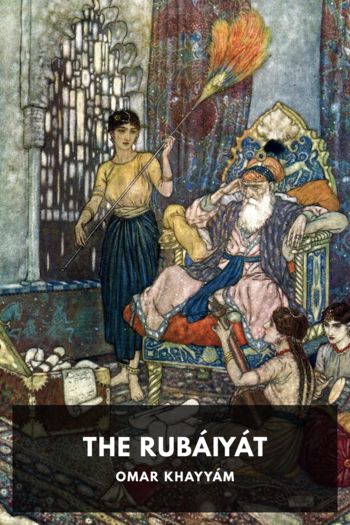Moneyball, Lewis, Michael [10 ebook reader TXT] 📗

Book online «Moneyball, Lewis, Michael [10 ebook reader TXT] 📗». Author Lewis, Michael
Dangling Carlos from a hook, Billy tried to lure the Pittsburgh Pirates into giving him their slugging outfielder Brian Giles. When the Pirates resisted, he offered to send Carlos and his fourth outfielder Adam Piatt to Boston for outfielder Trot Nixon, and then send Trot Nixon and the A’s flame-throwing Triple-A reliever, Franklyn German, to Pittsburgh for Giles. Again, no luck. He then gave up on Giles and tried and failed to talk Cleveland’s GM, Shapiro, into sending him both his ace, Bartolo Colon, and his best hitter, Jim Thome, for Cory Lidle and Carlos Pena.
In all of this Billy Beane was bound to fail a lot more than he succeeded: but he didn’t mind! The failure wasn’t public; the success it led to was. Trawling in late June, using Carlos Pena as chum, he stumbled upon a new willingness of the Detroit Tigers to trade their young but expensive ace, Jeff Weaver. Billy didn’t have much interest in Jeff Weaver (at $2.4 million a year, pricey) but he knew that the Yankees would, and he had long coveted the Yankees’ only young, cheap, starting pitcher, Ted Lilly (as good as Weaver, in Billy’s view, and a bargain at $237,000). He sent Carlos Pena to Detroit for Weaver, then passed Weaver to New York for Lilly plus a pair of the Yankees’ hottest prospects. Somehow, in the bargain, he also extracted from Detroit $600,000. When Yankees GM Brian Cashman asked him how on earth he’d done that, Billy told him that it was “my brokerage fee.”
That had happened on July 5. He wasn’t finished; really he was just getting started. He made a run at Tampa Bay’s center fielder Randy Winn and while Tampa Bay’s management was willing to talk to Billy, they were too frightened of him to deal with him. One former Tampa executive says that “after the way Billy took [starting pitcher Cory] Lidle from them, they’ll never deal with him again. He terrifies them.” He came close to getting Kansas City outfielder Raul Ibanez, but then Ibanez went on a hitting tear that led Kansas City to reevaluate his merits and decide that Billy Beane was about to pick their pockets again. (The year before, at the trade deadline, Billy had given Kansas City nothing terribly useful for Jermaine Dye, just as, the year before, he’d given them next to nothing for Johnny Damon.)
With Carlos Pena gone, Billy re-baited his hook with Cory Lidle. Lidle had pitched poorly during the first half of the season but he was starting to look better. When Lidle went out to pitch, Billy rooted for him as he never had before—not simply for Lidle to win but for Lidle’s stock to rise. Kenny Williams, GM of the Chicago White Sox, expressed an interest in Lidle. Billy suggested a package that would yield, in return, the White Sox’s slugging outfielder Magglio Ordonez. The White Sox declined, but that conversation led to another, in which Billy discovered that the White Sox were willing to part with their All-Star second baseman and leadoff hitter, Ray Durham. To get Durham and the cash to pay the rest of Durham’s 2002 salary, all Billy had to give up was one flame-throwing Triple-A pitcher named Jon Adkins. Over the past eighteen months Billy had traded every pitcher in the A’s farm system whose fastball exceeded 95 miles per hour—except Adkins.
Ray Durham, acquired on July 15, had been a Fucking A trade. (It quickly inspired an article on baseballprospectus.com, the leading sabermetric Web site, with the title: “Kenny Williams, A’s Fan.”) In getting Durham, Billy got a lot more than just half of a season from a very fine player. Durham would be declared a Type A free agent at the end of the season. Lose a Type A free agent and you received a first-round draft pick plus a compensation pick at the end of the first round. If Kenny Williams valued those draft picks properly, he would have kept Durham on until the end of the season, and then let him walk. Those two draft picks alone were worth paying Ray Durham to play half a season; they were certainly worth more than the minor league pitcher the White Sox acquired for Durham.
This trading strategy came with a new risk, however. Baseball owners and players were, by the end of July, at work hammering out a new labor agreement. The players were threatening to strike; the owners were threatening to let them. The Blue Ribbon Panel Report had put oomph behind a movement, led by Milwaukee Brewer owner and baseball commissioner Bud Selig, to constrain players’ salaries and share revenues among teams. One of Selig’s proposals—tentatively agreed to by the players’ union—was to eliminate compensation for free agents. No more draft picks. Billy Beane was making a bet: it wouldn’t happen. The only way a new labor agreement occurs, he assumed, is if the players agree to some form of constraint on market forces, either through teams sharing revenues or some form of salary cap. And if they agree to that, the owners will be so relieved that they give the players what they want on every smaller issue.* “This is a small issue in the big picture,” he says. “The history of the union negotiations tells you that they’re never going to acquiesce to the slightest detail. If the owners do get revenue sharing, it’s going to be, ‘Grab your ankles.’ It’s going to be, ‘Do what you want with me. Beat me like a farm





Comments (0)